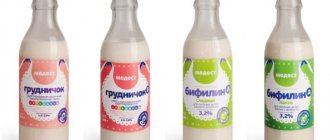Today, breastfeeding receives massive support throughout the world. Despite the abundance and quality of modern formulas for artificial feeding, breast milk is still the most preferable option. After all, it can change its composition to suit the needs of a particular child and satisfy his needs fully. It is believed that a baby needs such maternal care until he is 2 years old. However, some women go further and continue feeding when the child is 3, 5 or even 7 years old. How good is this initiative?
The benefits of mother's milk
Mother's milk is a unique product. It contains up to 500 different substances necessary for the baby, some of which are simply impossible to duplicate artificially. In particular, it contains:
- 88% water, which is biologically active and easily absorbed by infants.
- 7% carbohydrates. They are presented mainly in the form of lactose, i.e. milk sugar, which accelerates the development of the brain and nervous system, as well as promoting the complete absorption of iron and calcium.
- 4% fat. They strengthen the baby’s immunity and form the central nervous system.
- 1% proteins. This is the basis for the growth of a baby, who gains weight quite rapidly in the first months of life.
Article on the topic Myths and reality.
Risks that breastfeeding poses for the baby and mother In addition, breast milk contains iron, vitamins, hormones, antibodies and white blood cells, which protect the body from infections. Breastfeeding is not only beneficial for the baby, as it saturates it with all the substances necessary for growth and development, it is also an excellent option for calming the mother. It is often even called an antidepressant.
Naturally, for better formation of the bond between mother and baby, as well as for its full development, feeding should be followed to the best of your ability. This is especially important before the child turns one. By this time, complementary feeding has already begun to be introduced and the need for breast milk gradually disappears. However, not everyone can give up such a close connection with the baby; some continue to feed him further. And experts have differing opinions on this matter.
The benefits of breastfeeding after a year for a child
- Supports and enhances immunity, reliably protects against viruses. Infants are less likely to catch colds, tolerate illnesses more easily and recover quickly;
- Improves digestion, improves the absorption and digestion of complementary foods, prevents intestinal colic and stomach upsets;
- Positively affects the development of mental abilities. Infants develop faster and adapt more easily to society;
- Ensures the health of the baby's oral cavity, prevents the formation of malocclusion and reduces the risk of caries, relieves pain during teething;
- Develops the speech apparatus. Infants who receive milk for a long time begin to speak faster and earlier;
- Creates a comfortable psychological environment. The child grows up calmer, psychologically stable and confident. He is not capricious and less susceptible to stress;
- Relieves allergic conditions and protects against allergic reactions;
- Provides a close connection between baby and mother.
Pros and cons of long-term feeding
Among the advantages of prolonged breastfeeding is the fact that mother’s milk continues to be useful for the child in the future, because it still gives him additional antibodies to support immunity, provides him with vitamins and microelements (for many mothers this is an argument: it is better to give your milk than buying industrial pharmaceutical complexes). Also, mother's milk can become an alternative food when the child gets sick and refuses food.
Question answer
What causes children to have problems with their bite? From the mother's point of view, there are reasons. For example, it is believed that breastfeeding is an excellent prevention of breast cancer and cancer of the female genital area. In addition, a woman can lose weight on it, since about 400 kcal per day is spent on milk production.
Among the disadvantages of breastfeeding a child who is almost ready for school, the main one is the problem with his psycho-emotional development. After all, he must undergo separation from his mother in time and receive from her a new version of spiritual connection and communication. Breastfeeding should naturally transition into verbal communication on time. This is what allows the child to find new forms of interaction with others and develop harmoniously.
For the woman herself, long-term breastfeeding also carries a number of restrictions. Firstly, she cannot tear herself away from the child, because he will actually be injured. Secondly, she has to pay special attention to the health of her breasts: pump on time, take care of her so that stretch marks do not appear, etc. She will also be limited in her choice of medications, because they can still be passed on to the baby with milk. Despite the fact that the number of feedings at the age of 5-7 years is much lower, you will still have to adhere to a diet and certain restrictions.
Disadvantages of breastfeeding after one year
- Emotional and physical fatigue, moral exhaustion;
- Lack of time for sleep and rest;
- It is important to constantly monitor your diet and stick to your diet when breastfeeding, giving up your favorite foods;
- Inability to leave a child without a mother for several days;
- A woman cannot devote more time to herself and other family members;
- A nursing mother cannot fully go to work and be away from her baby for a long time;
- Painful sensations in the mammary glands, the risk of lactostasis and mastitis. It is important to properly care for your breasts and nipples during breastfeeding;
- Painful sensations, cracks and abrasions on the nipples, including if the child bites the breast.
Experts' opinion
Pediatric immunologist Anna Shulyaeva:
— If you look from the point of view of immunity, then breast milk does not contain any useful substances after a year or a year and a half of feeding. Mothers often only think that if they breastfeed their baby longer, they can protect him from various viruses and infections. This is wrong. The amount of interferons in milk is reduced to a minimum, and in the event of a collision with pathogenic microorganisms, it is not enough for full protection. Therefore, for the sake of mythical protection from diseases, there is no point in feeding longer.
If feeding continues in children over 2 years old, it is more just a ritual than protecting or filling the child with some useful substances. A child, especially one with a delicate mental structure, may need prolonged feeding as a means of calming down. If this does not cause any trouble or inconvenience to the mother, but makes the baby calmer and more confident, you can continue breastfeeding for a long time. However, long-term feeding has no practical health benefits.
Psychologist Elena Makarova:
— A baby at different stages of development requires different care from an adult. The child grows and develops, which means that the mother needs to focus on age-related needs for the full development of the child and relationships with him.
Article on the topic
Milk escaped". How to establish breastfeeding Breastfeeding up to the age of 1.5-2 years is not only food, but also a way of communication and interaction between the baby and mother. It is important to understand that communication is necessary for harmonious development. And even if the mother feeds the baby from a bottle, but at that moment talks to him, conveys her emotional and spiritual warmth, then this will be a greater contribution to development than breastfeeding in parallel with viewing the feed on social networks.
At the age of about 3 years, the baby begins to realize and defend his independence. By this age, he already has many ways of interacting and communicating with his mother, and these ways continue to change and develop. Getting stuck in a stereotypical way of communicating through breastfeeding after 2.5 years should be cause for concern. This indicates the difficulties of creating and developing new psychological mechanisms necessary for the child’s adaptation. Therefore, if it is not possible to abandon this ritual, then a psychological diagnosis of the child is desirable for a timely analysis of the situation and to ensure the harmonious development of the baby in accordance with the psychological characteristics appropriate to the age.
Benefits of long-term feeding
Experts from the World Health Organization say that a child should be breastfed until he is 2 years old. This increases children's immunity and enriches the body with essential microelements.
Some people believe that the composition of milk does not change, so it is useless to drink it. But that's not true.
After a year, the nutritional value and fat content of the product changes, the amount of lactoferin and immunoglobulin - elements that support immunity - increases.
Let's take a closer look at whether there are significant benefits from breast milk after a year.
All the benefits of breast milk after 12 months are as follows:
- Replenishing the level of minerals and vitamins in the children's body. Breast milk is the healthiest, it is incomparable to either goat or cow milk.
- Maintaining a sufficient amount of calcium in the baby. Most children at this age do not like to eat milk porridge, cottage cheese, kefir, and some are lactose intolerant. The best option for such babies is a long lactation period.
- Physiological sucking affects a properly formed bite and protects teeth from caries.
- Increasing intellectual abilities. This is explained by the content of fatty acids in milk, which have a positive effect on brain cells.
- Increased immune response. The presence of immunoglobulins in milk contributes to the speedy fight against infectious diseases.
- Easy to fall asleep. The baby instantly calms down and falls asleep with the help of his mother’s breast; he does not need to be carried in her arms and rocked to sleep for hours.
- Minimizing the possibility of allergic reactions. Mother's milk contributes to the maturation of the imperfect digestive system; it does not irritate the vulnerable mucous membrane in infancy.
- No risk of contracting an intestinal infection.
- A distraction during the eruption of the first teeth. And due to the content of morphine-like compounds, it has a mild analgesic effect.
Long-term lactation is also beneficial for mothers. Since the menstrual cycle is not restored, the woman will always be in a good mood due to the absence of premenstrual syndrome.
In addition, breastfeeding helps increase iron levels in the body and reduces the risk of developing ovarian and breast cancer.
The Value and Benefits of Breastfeeding
Breast milk is the ideal food for a newborn. It contains the correct balance of proteins, fats, carbohydrates, vitamins and microelements
Particular attention is paid to immunoglobulins - substances that protect the baby from infections. There are benefits of breastfeeding for both mother and baby
Pros for mom
- Convenience - you can feed at any time and anywhere, there is no need to bother with bottles.
- Quick recovery - sucking movements stimulate contractile activity of the uterus after childbirth.
- Weight loss – increased energy costs for milk production help you quickly lose extra pounds after pregnancy.
- Calming effect - during feeding, cortisol levels decrease, heart rate stabilizes, and blood pressure decreases.
- The opportunity to rest - breastfeeding and co-sleeping allow a woman not to get up at night and provide complete rest.
Benefits for babies
- Helps to form the correct intestinal microflora and helps get rid of colic.
- Provides the baby with the necessary amount of nutrients, regardless of the mother’s diet.
- Forms strong immunity and has a preventive effect against infectious diseases.
- Forms the correct psycho-emotional and physical relationship.
- The sucking reflex helps to calm down and fall asleep.
Rules for breastfeeding after one year
- After a year, the number of feedings is three to four times during the day and once or twice at night;
- At two to three years of age, feeding continues once or twice at night and during the day;
- The main feedings occur “around sleep”, i.e. before the baby falls asleep and immediately after waking up;
- Breastfeeding for a child after a year becomes auxiliary, and the main thing is complementary feeding and receiving adult food;
- Introduce new foods into complementary foods, prepare your baby’s favorite dishes more often;
- Gradually reduce the duration of applications;
- Replace unnecessary daily attachments with games and exciting activities, walks, exercises and massage. After a year, a child’s routine should become more varied;
- First, remove unnecessary and unnecessary breastfeeding during the day. Then remove daytime feedings “around sleep”;
- Feedings are removed last at night, before bedtime and upon awakening. As a rule, weaning off night feedings is the hardest thing to do.











